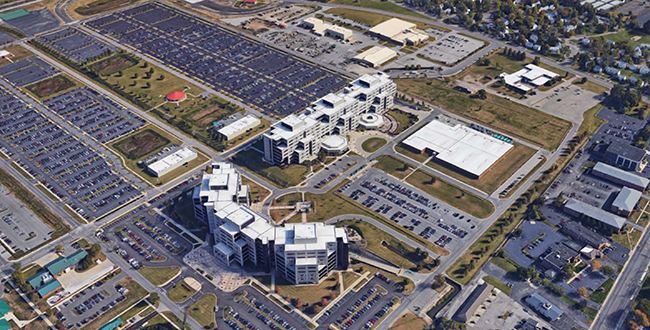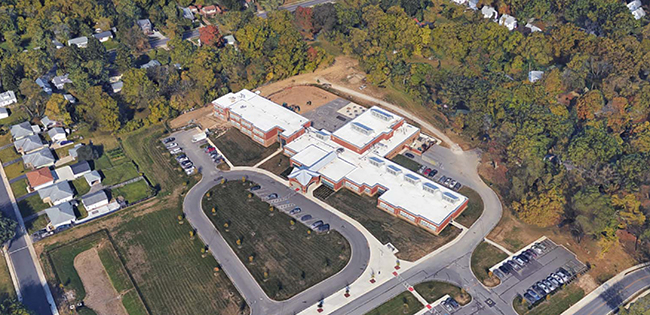Dark surfaces are absorbing and trapping heat on the surface of cities, raising temperatures. This forces residents and businesses to increase energy use on air conditioning, giving them higher electricity bills and exacerbating climate change by increasing emissions. White and cool roofs can be a solution to help reduce surface temperatures and electricity bills by reflecting solar energy back into the atmosphere, reducing energy costs, and increasing air quality and livability for citizens.
(Image Credit: Google Maps)
Idea
Cool roofs are roofs that are lighter colored so that they reflect more solar energy back into the atmosphere rather than absorbing the heat into the building. Existing dark roofs can be coated in a reflective paint, while new roofs come manufactured as white colored and installed with a more efficient insulator. Cool roofs reflect up to 75% of solar energy, compared to black roofs which only reflect up to 5%. In the summer, black roofs can reach temperatures of up to 185 degrees, versus a white roof, which only reaches 115 degrees. This increase in reflectivity and reduction in heat absorption can save businesses 10 to 40% in summer energy costs. Reflection of solar energy also benefits pedestrians by reducing surface temperature by 1 to 2 degrees and lowering risk of air pollution from nitrogen oxide, also known as smog.
Goal
Increase cool roof coverage in the City of Whitehall.
Objectives
- Amend building code to require cool roofs on all new commercial and institutional buildings and roof replacements.
- Work with organizations like the White Roof Project to assist independent businesses and non-profit institutions.
- Incentivize cool roof replacements and coatings in residential neighborhoods.
Examples and Resources
White Roofs in Whitehall:
DSCC

Beechwood Elementary

Target

Oak Ridge National Laboratory Roof Savings Calculator
Connection to Other Plans
This idea potentially addresses the following elements of the MORPC Regional Sustainability Agenda:
| Element | Description | Rationale |
|---|---|---|
| 1.6 | Reduce per capita energy consumption across all sectors. | Cool roofs reduce energy consumption to regulate temperatures. |
| 2.1 | Reduce emissions to meet federal air quality standards. | Cool roofs reduce urban heat islands and lowers street level temperatures, improving air quality. |
